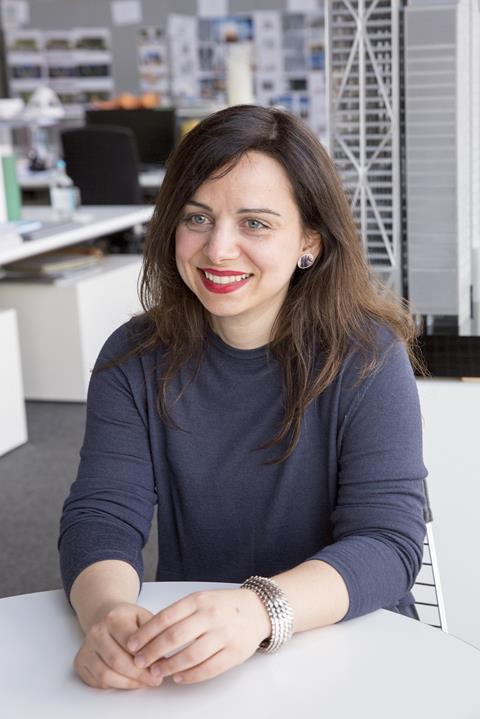The debate over the role that artifical intelligence should play in our industry tends to go round and round, but really we need to move it forward – and faster, says Martha Tsigkari of Fosters + Partners
Lately, it feels as if we have been cast in an alternative production of Groundhog Day, where weather reporting in Punxsutawney has been replaced with discussions around artifical intelligence in architecture. Who cannot empathise with Bill Murray’s rising sense of trepidation when dealing with a constant loop of déjà vus?

These AI debates usually revolve around the same themes: what is AI; what are the opportunities; how is it used in architecture and construction (translation: how many different ways can we use the likes of MidJourney and ChatGPT)?
It is not that these are not worthy questions, but one would have hoped that, by now, the industry would have moved the discussion further forward. There is an array of ways that AI can be used in the AEC beyond diffusion models.
Change is taking place at a phenomenal rate and, like an approaching iceberg, we can only see its tip, while its vast mass is underwater
The fact that a lot of our arguments revolve around prompt engineering and image making is a telling sign of how superficially we approach the subject as an industry and how little we understand this technology and its transformational potential. In some ways, this is understandable: change is taking place at a phenomenal rate and, like an approaching iceberg, we can only see its tip, while its vast mass is underwater (I promise that any comparisons with the Titanic are unintentional).
And yet, if there is one thing that we all know about icebergs, it is that they need to be approached with caution: we cannot afford to let things slide.
>> Also read: The stakes are high but so are the rewards: AI and the future of construction
Beyond text-to-image pipelines, there are a lot of things that we should be actively focusing on – data, IP, infrastructure, actual AI adoption (not the imaginary 60% everyone is quoting), text-to-3D, workflow automation, regulations, education – all of which could put us in the driving seat of a car that is already speeding. However, we all seem to be sitting in the back right now.
Apart from data (which is the alpha and the omega of this technology and requires an article in and of itself) one of the biggest questions our industry should be preparing to answer is that of our professional value in a future where AI automation and augmentation have an established presence in our workflows.
A small thought experiment: as AI’s multimodal capabilities evolve and are integrated into our processes, we are not only going to see the automation of several tasks, but also the AI-driven orchestration and delivery of entire design pipelines. As more and more software adheres to an API-first approach, processes that now require days and multiple people to complete could be replaced by workflows delivered automatically through AI agents ubiquitously stringing together applications in the background.
The software within these pipelines will itself be infused with predictive and generative AI models, capable of powerful analytical and creative capabilities that can span from autonomous report writing to fully automated performative generative design and documentation. These advancements could reduce delivery times from days to hours (or even minutes) and resourcing numbers from large teams to a single person.
When the number of hours and people we use to complete a given task is no longer the main driver for fees, what is the value that we will use to justify appropriate compensation for our services?
In this not-yet-possible but certainly probable future, where AI systems can automatically complete feasibility studies, arrange meetings, collate and introduce feedback from all relative stakeholders, create and optimise options against design aspirations and performance criteria and deliver drawings and reports, our time and resourcing will be considerably reduced, compromising our current value proposition. Because, when the number of hours and people we use to complete a given task is no longer the main driver for fees, what is the value that we will use to justify appropriate compensation for our services?
Many will say that our value lies in the domain expertise and creativity we bring to the table. And yet, there is a big possibility that the former will also be compromised – or rather commoditised.
As AI adoption shrinks productivity deltas between lower and higher-skill workers, we will gradually see a loss of skill premiums, which may even result in the commoditisation of our services. As technologies evolve (think of the advancement of GPS followed by service commoditisation enablers like Uber), there are no reassurances that domain expertise (like the one that black cab drivers in London had) will remain a sufficient and necessary condition to futureproof any profession.
Whether that eliminates, at scale, the need for the profession itself or becomes the same catalyst that photography provided for the rise of alternative painting styles in art will depend on how we as architects redefine our value to the business. And that is why I believe that creativity, collaboration, communication, innovation, ethics and responsibility should be at the heart of how we define the value of our work.
Martha Tsigkari is a senior partner and head of the Applied R+D group at Foster + Partners



























No comments yet